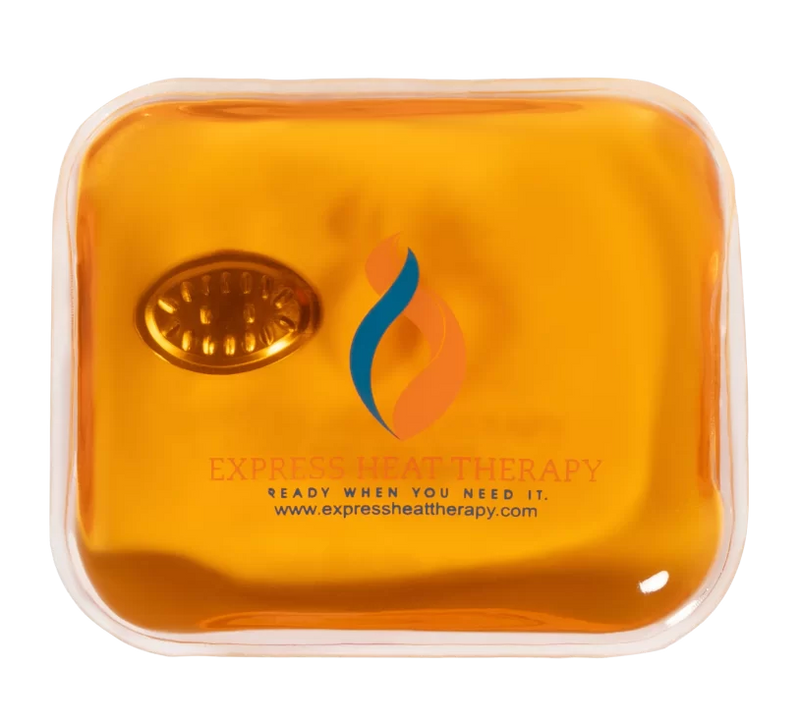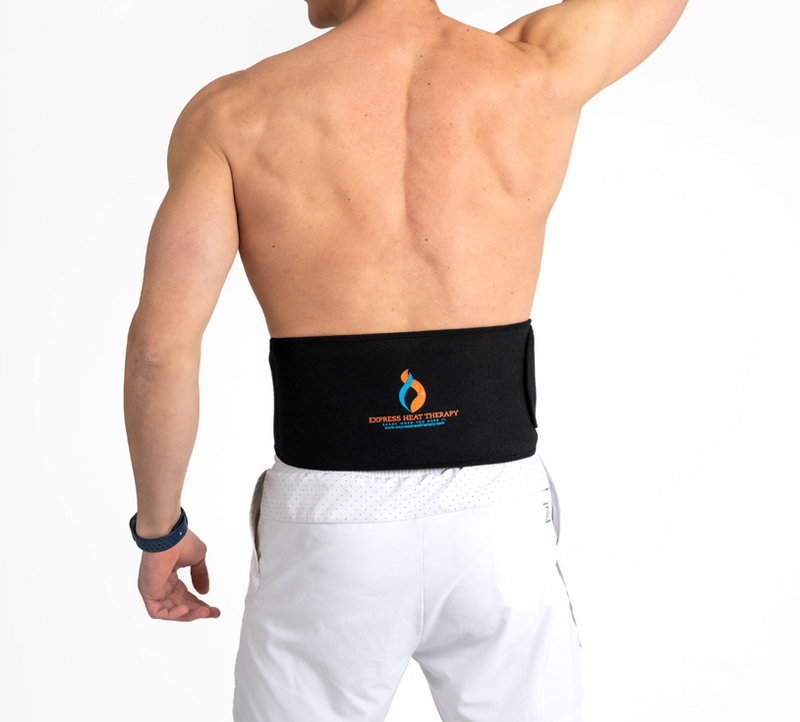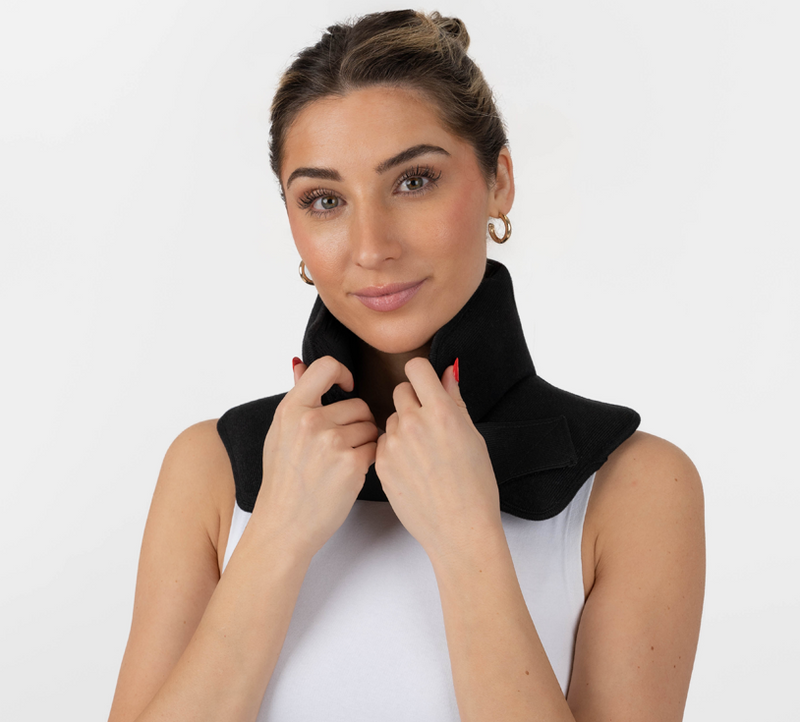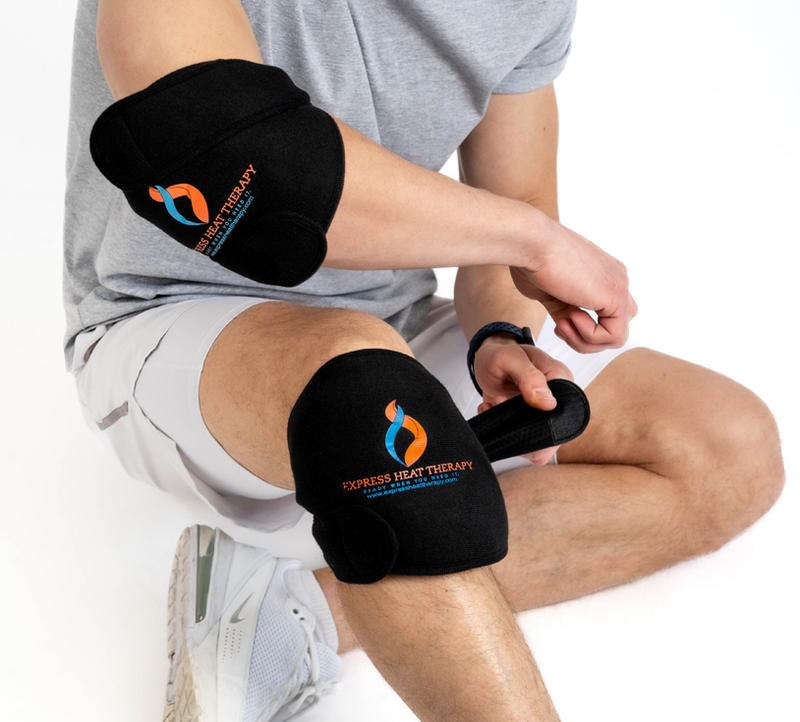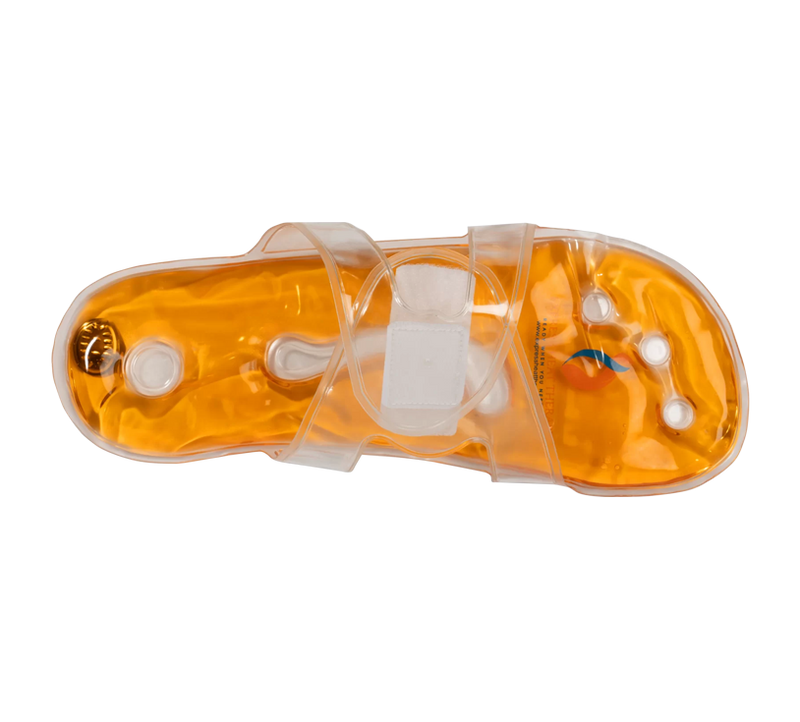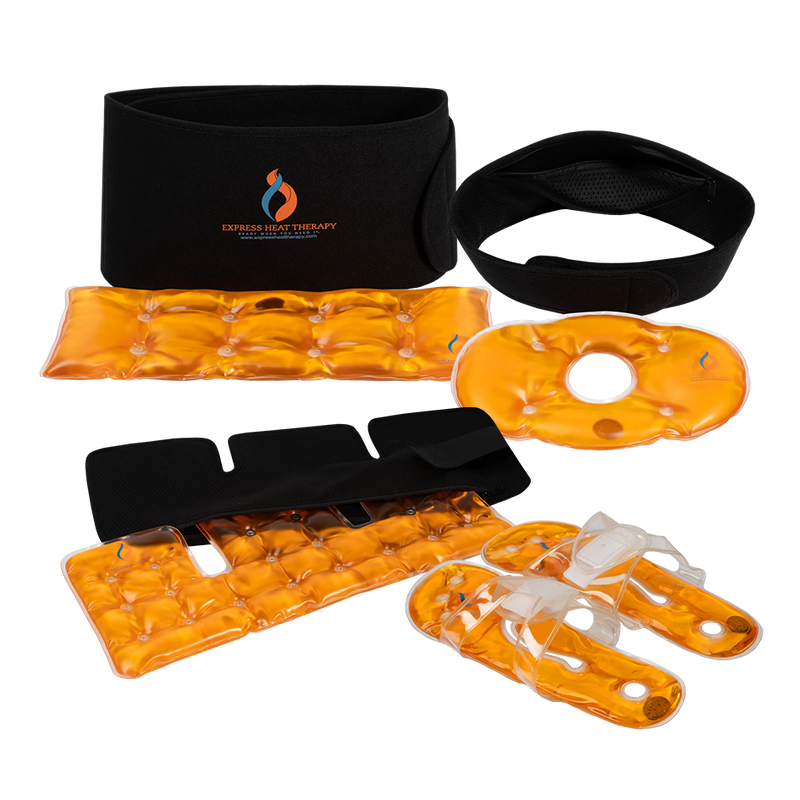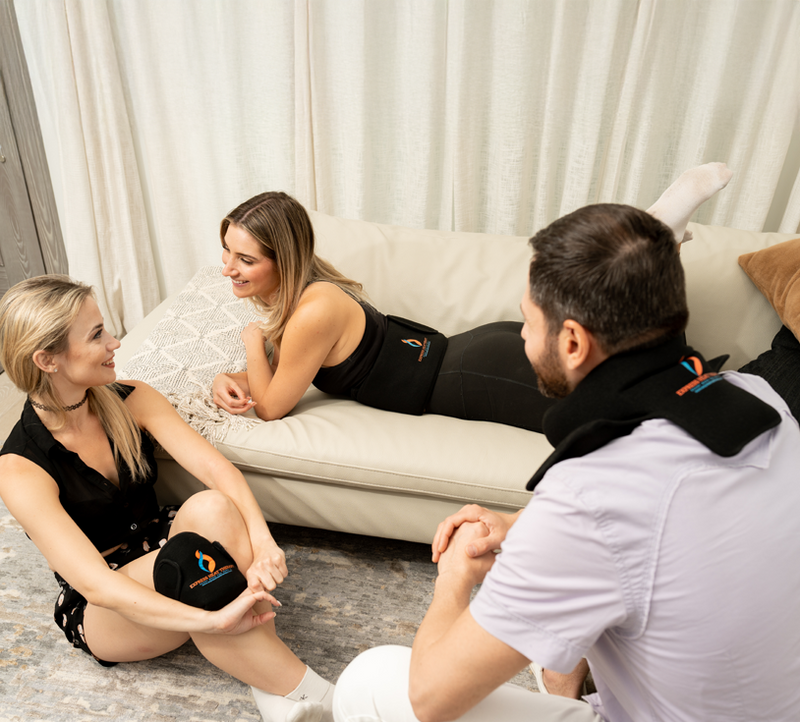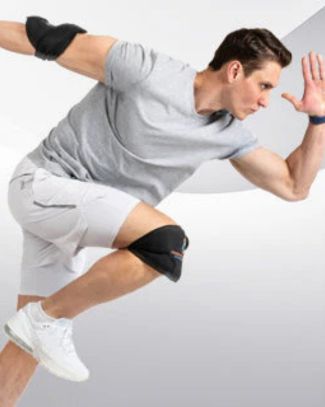Heating pads are one of the simplest ways to ease various types of pain, including sore muscles, menstrual cramps, joint stiffness, and chronic back tension. They’re simple, affordable, and effective.
Yet, we often hear people ask one common question: Should I use a moist or dry heating pad?
The truth is, both types provide warmth to relieve pain and improve blood flow, but they do so in slightly different ways. When you understand the difference between a moist vs dry heating pad, you will be able to choose the one that works best for your needs.
What Is a Dry Heating Pad?

A dry heating pad is what most people picture when they think of heat therapy. It’s the traditional type that uses electric coils or chemicals to create warmth. With this type of heating pad, you place it directly on your skin or over clothing, allowing it to provide dry heat to the affected area.
How Does a Dry Heating Pad Work?
Dry heating pads rely on air-based heat transfer. When electricity or a chemical reaction generates heat, it warms the pad’s surface, which then transfers dry warmth to your skin and muscles.
Some of the benefits of a dry heating pad include:
-
It is easy to use anywhere; all you have to do is just plug it in, activate it, and apply
-
There is no moisture involved, so it stays dry and comfortable on clothes or bedding
-
Because there’s no moisture, dry heat can often be used for longer periods (dry heat duration of 30 minutes to 1 hour)
-
It is great for daily muscle tension, menstrual cramps, or back discomfort
If your lower back feels tight after sitting all day at work, a dry heating pad provides steady warmth that eases tension while you rest or even as you read or watch TV.
How to Use a Dry Heating Pad
-
Place the pad over the sore area
-
Set it to a comfortable, moderate temperature
-
Use it according to the manufacturer’s recommended duration per session
-
Always follow dry heat safety tips, don’t sleep with it on or apply it directly to broken skin
What Is a Moist Heating Pad?

A moist heating pad is simply a humid pad. Instead of providing only dry heat, it provides warm moisture that penetrates deeper into tissues. This type of heat is softer and more soothing, especially for deep muscle pain.
How Does a Moist Heating Pad Work?
Moist heat works through water vapour conduction. When heat combines with moisture, it transfers energy, allowing warmth to reach the muscles and joints beneath the surface. Many pads achieve this by holding water in a fabric layer, or they can be used with a damp towel placed between the pad and skin.
Benefits of a Moist Heating Pad
-
Deeper heat penetration: Moist heat goes further into muscles and joints (moist heat vs dry heat tissue penetration) for long-lasting relief
-
Better for stiffness and chronic pain: Moisture helps relax tissues faster
-
Hydrates skin: Unlike dry heat, it doesn’t draw moisture away, reducing skin irritation
It is especially effective for muscle spasms or tension caused by stress
How to Use a Moist Heating Pad
-
Dampen the inner cover lightly (never soak it)
-
Place it over the area of pain
-
Apply for 15–20 minutes (moist heat duration)
-
After use, let the pad cool completely before storing
-
Avoid excessive moisture or prolonged use so you don’t get burned
Moist vs Dry Heating Pad: Which Is Better?

When comparing moist heating pad vs dry heating pad, there isn’t one “better” heating pad. It depends on the type of pain you’re treating and your comfort preference.
In summary, if you need deep, fast-acting relief, go for moist heat. If you want steady, convenient warmth, dry heat is ideal.
| Situation | Best Option | Why It Works |
|---|---|---|
| Deep muscle pain or joint stiffness | Moist heating pad | Moist heat penetrates deeper into tissues for lasting comfort. |
| Mild soreness or general tension | Dry heating pad | Easy, clean, and convenient for everyday aches. |
| Chronic conditions (arthritis, fibromyalgia) | Moist heating pad | Provides more thorough relaxation and hydration to muscles. |
| Quick daily relief or travel use | Dry heating pad | No prep needed, and safe for longer sessions. |
Safety Tips for Both Moist and Dry Heat

Heat can do a lot of good, but too much of it or using it carelessly can irritate your skin or make the pain worse. Here’s how to stay safe and comfortable:
-
Check the temperature first: Before putting the pad on your skin, test it with your hand. It should feel warm, not hot. If it’s uncomfortable to touch, it’s too hot for your body
-
Don’t sleep with it on: Using heat while you’re asleep can easily lead to burns. If you like using a heating pad before bed, turn it off and remove it before you drift off
-
Keep each session short: Give your skin time to cool down between uses. Longer sessions won’t make the pain go away faster, then you also risk irritation
-
Use a cloth between your skin and the pad: A light towel or piece of clothing can protect your skin and help spread the heat more evenly
-
Avoid using heat on swollen or bruised areas: If the area looks red, puffy, or feels warm to the touch, switch to an ice pack instead. Heat can make fresh swelling worse
-
Be mindful if you have sensitive skin or poor circulation: If you have conditions like diabetes or nerve problems, talk to your doctor before using heat regularly
-
Check your heating pad regularly: If it’s electric, look for frayed cords or damage. If it’s reusable or gel-based, make sure it’s in good shape before warming it again
-
Stay hydrated: Using heat can cause blood to be drawn toward the surface of your skin. Drinking enough water helps your body handle it better and prevents dizziness
These little steps can keep your heat sessions safe, relaxing, and effective.
Conclusion
Ultimately, choosing between a moist vs dry heating pad comes down to your needs and preferences.
If your goal is deep, fast relief for stiff muscles or chronic pain, a moist heating pad is your best bet. This is because humidity helps the heat penetrate deeper into tissues, providing long-lasting comfort.
If you want clean, easy, and consistent warmth for everyday aches or cramps, a dry heating pad is perfect. It’s simple to use, portable, and great for quick relaxation. Remember, you can even alternate between both types depending on your situation.
We recommend that you use heat therapy wisely, follow safety guidelines, and always listen to your body.
For safe, reusable options that provide reliable pain relief, use Express Heat Therapy’s range of heating pads. They are designed to help you recover naturally, comfortably, and effectively.
FAQs
-
Is a moist heating pad better than a dry heating pad?
It depends on your condition. Moist heat penetrates deeper into tissues and works better for stiffness or chronic pain. Dry heat is better for mild soreness and longer relaxation sessions.
-
When is moist heat better than dry heat?
Moist heat is best for deep muscle pain, arthritis, or tight joints that need quick relaxation. It’s especially soothing for neck, shoulder, or back tension.
-
Does moist heat reduce inflammation?
Moist heat improves blood flow and muscle relaxation but doesn’t directly reduce swelling. For inflammation or recent injuries, ice therapy is more effective.
-
When not to use moist heat?
Avoid moist heat on fresh injuries, swollen areas, open wounds, or skin infections. Also, skip it if you have reduced sensation in your skin.
-
What are the disadvantages of using moist heat?
It requires a bit of setup time and shorter sessions. Overuse can cause minor burns or skin irritation if the product is applied too hot or for too long.
